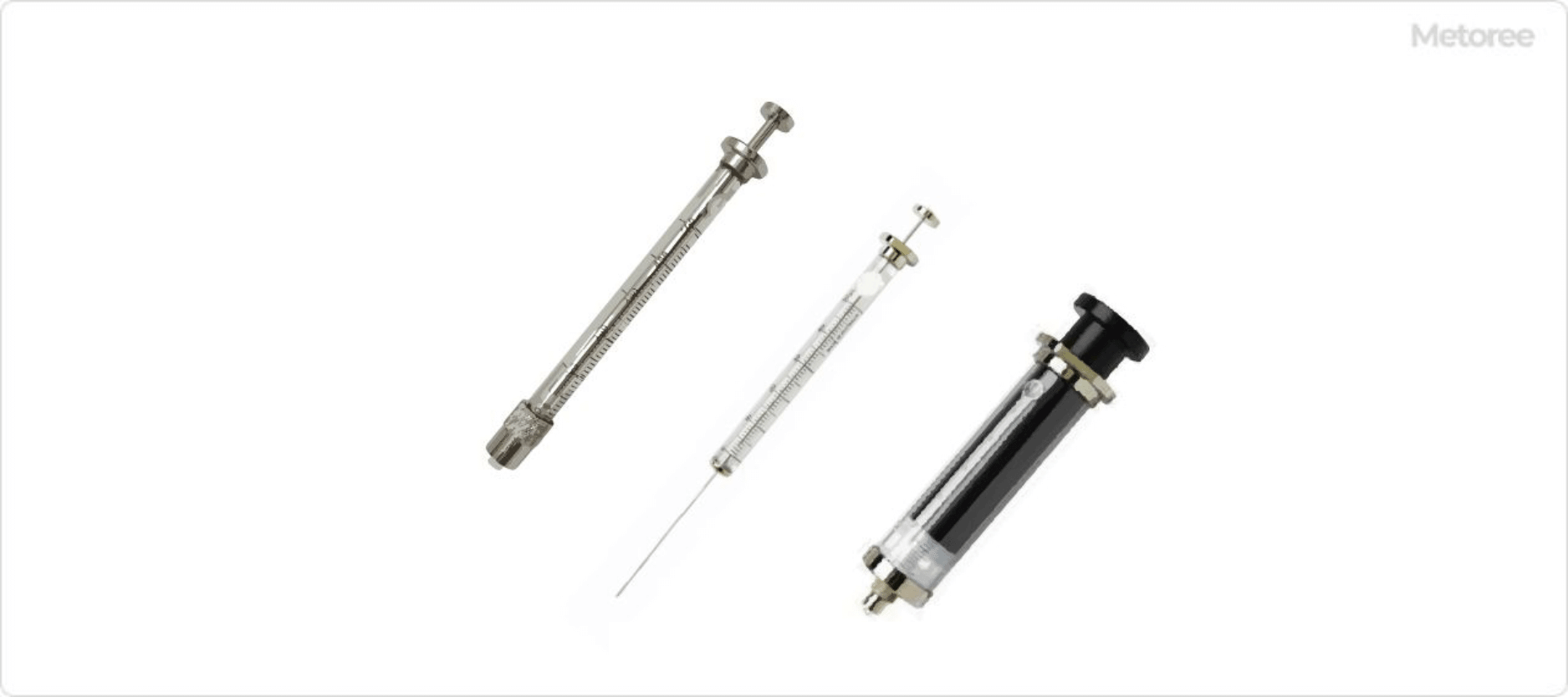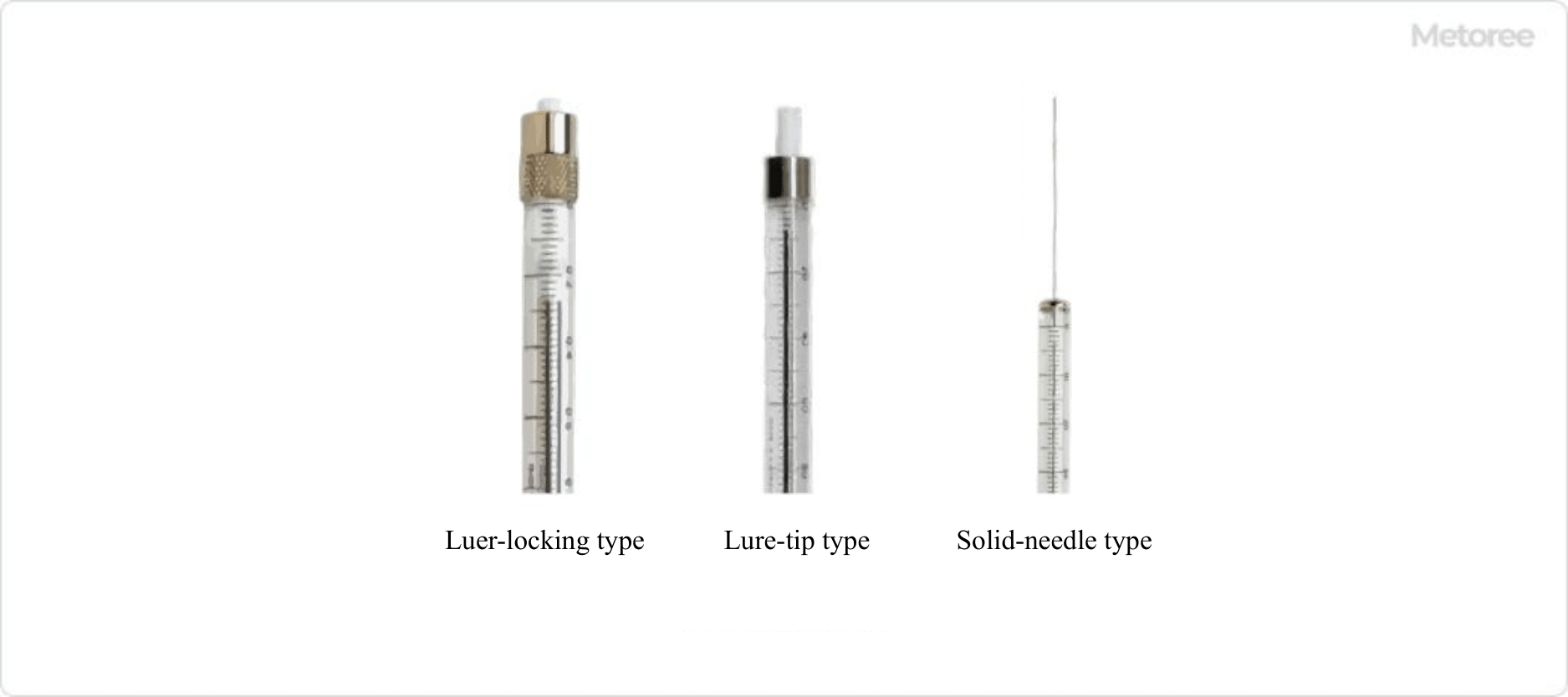What Is a Gastight Syringe?

Figure 1. Common gastight syringe
A gastight syringe is a hermetically sealed syringe that can handle liquids and gases.
The basic structure of the syringe is the same as that of a general glass syringe for micro-dosing (microsyringe). However, the PTFE tip on the plunger tip improves the airtightness of the syringe. Gastight syringes are usually sold as a set consisting of a syringe (outer cylinder) part and a plunger part.
Most products have the syringe part made of glass, while the plunger part is available in various materials such as glass, metal, and resin lining, depending on the capacity and application. It is necessary to select an appropriate material according to the condition of the sample to be used.
Uses of Gastight Syringes
Gastight syringes are widely used for general sample handling in laboratories as well as for quantitative weighing in analysis.
They can handle sample solutions in automatic dilution systems, automated pipetting systems, and manual samplers/autosamplers such as HPLC. The ability to handle gases is also used to handle samples in gas analysis such as GCMS and for soil gas testing.
Principle of the Gastight Syringes

Figure 2. A plunger on a gastight syringe
The gastight syringes are the same as a normal micro syringe in that they consist of an outer cylinder, a plunger, and a needle.
PTFE (tetrafluoroethylene) is a fluoropolymer and has excellent heat resistance, abrasion resistance, corrosion resistance, and sliding properties.
Precautions for handling include the following:
- Do not perform plunger pumping in dry conditions.
- Internal cleaning should be done by suction and discharge of water or solvent.
- Drying should be done by air-drying and not heated above 60°C.
These are because the gastight syringes are equivalent to glassware for metering.
Types of Gastight Syringes
The types of gastight syringes can be classified in capacity, shape, etc.
1. Capacity of Gastight Syringes
Gastight syringes are generally small in volume (a few µL to a few hundred µL), similar to those of ordinary micro syringes. However, some of the larger syringes have a maximum volume of up to 100 mL. The exact volume can be measured and injected.
2. Shape of the Needle Attachment Part

Figure 3. The shape of the needle attachment part
Gastight syringes are available in two types: the fixed-needle type, where the needle is affixed to the syringe, and the interchangeable-needle type. The fixed needle type is cost-effective and versatile. In contrast, the replaceable needle type is suitable for sampling in instances with significant contamination or where substances like salts tend to precipitate. In addition, needles with different shapes (needle outer diameter/length, needle tip shape) can be used depending on the application.
Interchangeable needles are further classified into the following two types:
- Luer-lock type
The part where the needle is attached is threaded and can be secured with a locking mechanism to prevent the needle from falling out. - Luer-tip type
The tip is tapered, and the needle is inserted.
3. Other
Some gastight syringes can be disassembled and autoclaved. This is ideal for handling biological samples in biochemistry and other fields. When autoclaving, it is generally recommended to set the temperature to 110°C for about 20 minutes.
Some manufacturers sell syringes for autosamplers/instruments separately from manual syringes.
As mentioned above, gastight syringes have a PTFE tip attached to the plunger, but there are also products in which the entire plunger is coated with PTFE in addition to the PTFE tip. Such products can be used for corrosive samples. Replacement plungers are also available for various products.